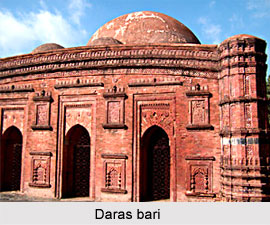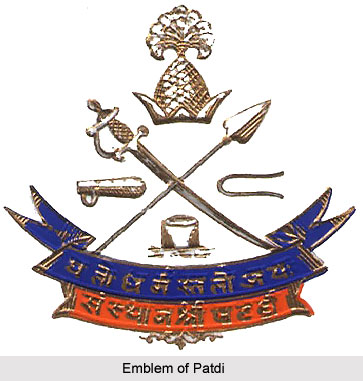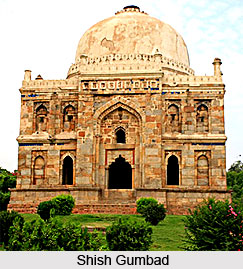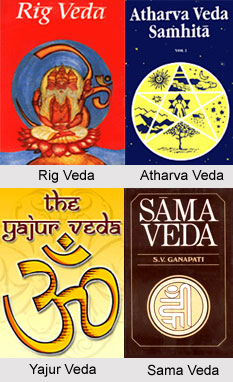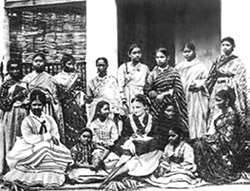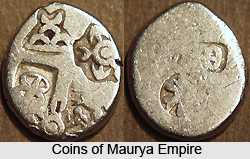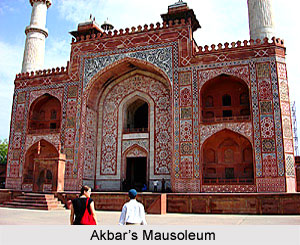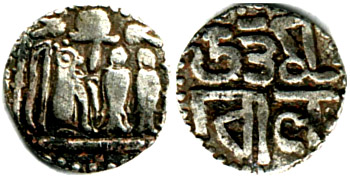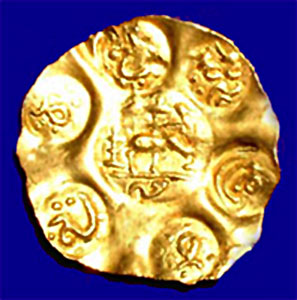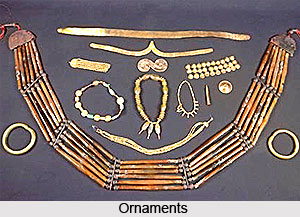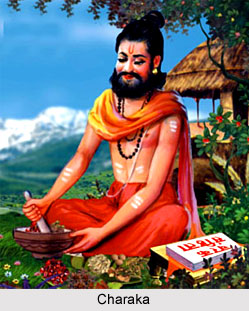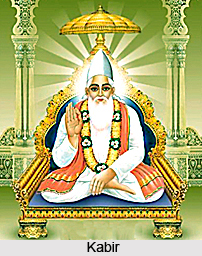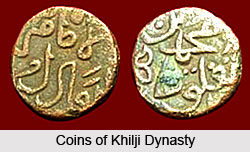Monetization of economy was a significant feature of the post Mauryan period. The Indo- Greek rulers issued gold coins. Menander was the last Indo-Greek king to issue gold coins. The Kushanas also issued several gold coins. Gold mines existed in Sind as well as in Dhalbhum. Satavahanas issued lead and copper coins.
The smaller republican dynasties issued silver and copper coins. The Nagas, Yaudheyas, Kunindas, Mitra rulers of Kaushambi, Mathura, Avanti and Ahichhatra also issued their own coins. Many nigamas issued copper coins and bronze. Money had penetrated deep into the life of common man during the post-Mauryan period.
As trade expanded urban centres grew in the country. North West India was urbanised due to the increased trade routes and traffic. Indo-Gangetic divide was an area of cultural transition where influences from India and the west mingled together. Khokra Kot near Rohtak and Sunet near Ludhiana, both associated with the Yaudheyas, a series of mounds in Kurukshetra, Agroha and Sirsa near Hissar all prospered during the post- Mauryan phase.
In the upper Gangetic valley, Hastinapur, Indraprastha, Mathura, Sankisa, Ahichchhatra, Saketa-Ayodhya, Kausambi and Bhita were important urban centres. Inscriptions refer to Caravan leaders, perfumers, bankers, Metalworkers, treasurers. Mathura was both a religious centre as well as an important centre of trade and commerce. Ahichchhatra was an important township in the post-Mauryan period. Bhita situated near Kaushambi was a prosperous trade centre.
Varanasi was an important trade-mart and a commercial centre. Three trade-routes met at this point. Sravasti was a nerve centre of commerce and a number of routes emerged from this place. It had routes for places like Saketa, Rajagriha, Kausambi, Varanasi, Alavi, Samkasya and Taxila. There were direct trade routes for Ujjain, Mahismati, Pratisthana, Bharukachchha and Surparaka. Vidisha was an important craft centre noted for ivory, weaving and sharp swords. Pawaya and Ujjain were other important cities in central India.
As India`s Mediterranean trade developed the Gujarat coast attained a new stage of economic prosperity. The most important city in Gujarat was ancient Bharukachchha.
It produced wheat, rice and cotton. The whole Indian subcontinent was dotted with urban centres during the post-Mauryan period. Trade was expanded leading to consequent growth of money that led to a proliferation of craft production as well as better management of industrial production and procurement.
As far as iron is concerned Telangana region of Andhra Pradesh was the richest. Karimnagar was a rural settlement where carpenters, blacksmiths, goldsmiths, potter lived in separate quarters. The seats of cotton industry were in Aparanta (Konkan), Kalinga, Vanga, Vatsa and Mahisa.
Uddiyan was an important wool making centre. The ivory work, glass manufacture and bead making, coin-minting were some other type of industries which developed during this period. The existence of merchant donors shows that they had prospered from the trade. Guilds played an important role in urban life including organization of production.
It is presumed that the guild system seems to have loosened the control of state over the industrial life of the country. There was considerable localisation of trade and industry and different occupations became highly specialised. Due to this places were named after different kinds of craftsmen - Ivory carvers` street, carpenters` village, and potters` village.
These guilds fixed the rules of work, quality of the product and their prices.


